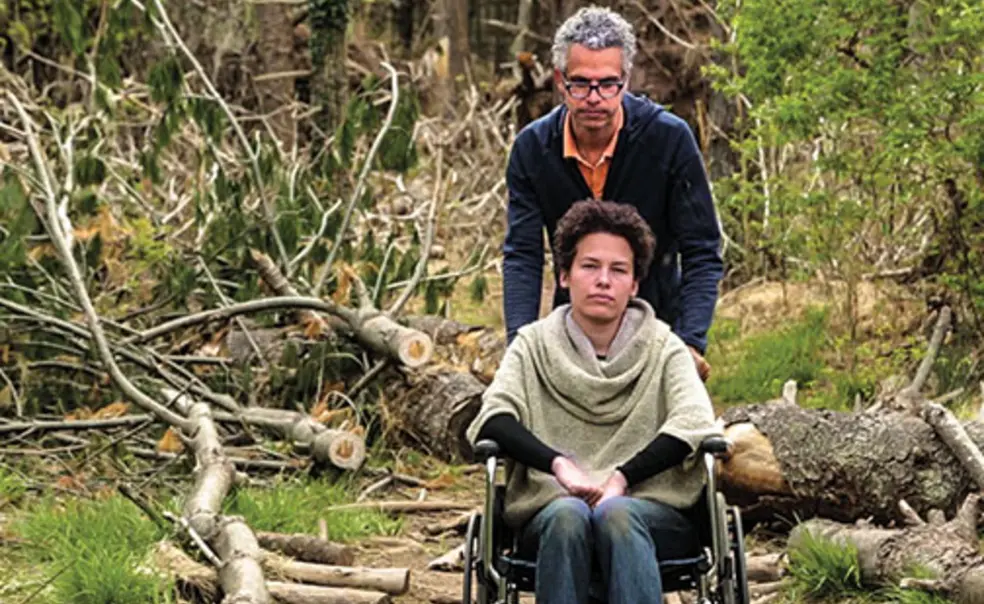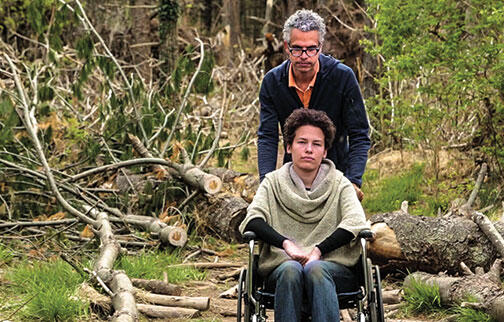Jennifer Brea ’05: Shooting Pain
Struggling to capture life with chronic fatigue on film in Canary in a Coal Mine
One warm day last March, Jennifer Brea ’05 rose from her bed, walked out onto her deck, and lay down. It was a modest outing for someone who had been confined indoors for five months. Brea suffers from myalgic encephalomyelitis, a form of chronic fatigue that is inexplicably crippling and easily exacerbated. To capture what life is like for those with the disease, she is directing Canary in a Coal Mine, a feature-length documentary that is scheduled to be released in 2017.
The film follows Brea and four others, including a 19-year-old named Jessica who is depicted struggling to stand for the first time in nine years. Brea and her collaborator, Kiran Chitanvis ’07, raised more than $200,000 on the crowdsourcing platform Kickstarter and won a grant from the Sundance Institute. Because of her illness, Brea can shoot the film only two days a month. While the crew is on location, Brea directs from home using an iPad. One patient following the film’s development called it “an uprising from their beds.”
Brea’s health unraveled three years ago. After working as a freelance writer covering China and Africa, she enrolled in a doctoral program in political science at Harvard. One day, she spiked a 104-degree fever and, after 10 days of dizziness, sweats, chills, and soreness, she “stopped being able to speak or think,” she says. Diagnosed with conversion disorder (formerly called hysteria by doctors), Brea took a medical leave from school. She got married — to Omar Wasow, now an assistant professor of politics at Princeton — but was incapable of reciting her vows.
Brea’s constellation of symptoms, according to the Centers for Disease Control and Prevention, affects about a million people in the United States, mostly women. Eighty percent of the cases are undiagnosed. To some clinicians, it is chronic fatigue syndrome, first recognized in the mid-1980s; to others, it is myalgic encephalomyelitis, first recognized in the mid-1950s. An effective treatment remains elusive, and diagnosis is challenging. “It is extremely difficult for patients to have an invisible disorder,” says Jarred Younger, a psychophysiologist who directs the Neuroinflammation, Pain, and Fatigue Lab at the University of Alabama. “On top of a debilitating disease, you have clinicians who may not believe you.”
When Brea first was confined to bed, she tried to write but her words were jumbled. She began to record her thoughts on video “to grapple with what was happening. You get this very suddenly, and then you just disappear,” she says. Now, she usually maintains an ascetic regimen: heartbeats under 100 a minute, steps under 100 a day. Last summer, feeling “somewhat better” on new medication, she took a flight with a film crew that was capturing footage for the movie and collapsed in an airport. “Somewhere in the back of my mind,” she says, “I was feeling so glad there was a camera there.”













No responses yet